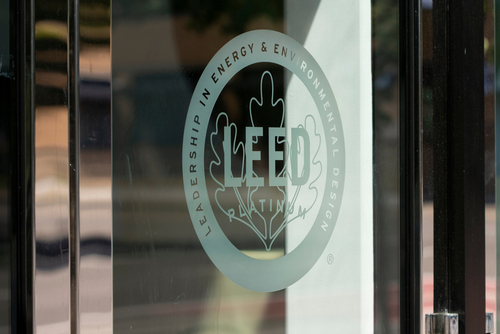The U.S. Green Building Council (USGBC) introduced a draft of its LEED v5 Operations and Maintenance (O+M) rating system for existing buildings. Buildings are responsible for around 40% of global energy-related carbon emissions, with 28% stemming from operational emissions, which include energy needed to heat, cool, and power them.

LEED v5 is the newest version of LEED (Leadership in Energy and Environmental Design), the world’s preeminent green building certification system with more than 100,000 projects certified globally. The update marks a transformative milestone in the built environment’s alignment with a low-carbon future and addresses critical imperatives such as equity, health, ecosystems, and resilience.
While the launch of LEED v5 begins with existing buildings, LEED v5 for Building Design and Construction (BD+C) will roll out in 2024.
The LEED v5 O+M draft is designed to deliver an understandable, actionable, and transformational rating system with a clear road map for progressive actions that facilitate LEED certification. The draft offers industry benchmarking and scoring to reward performance while maintaining a measured data-driven approach to certification. This will assist LEED users in anticipating and preparing for several years of building operations, encompassing legislative mandates, impending climate risks, and expected industry trends.
What’s New in LEED v5
Carbon:
- LEED v5 addresses all significant sources of carbon emissions in buildings.
- LEED v5 provides clear steps for delivering buildings with ultra-low greenhouse gas emissions.
- LEED v5 rewards existing buildings for leadership and planning to hit future decarbonization targets for buildings with ultra-low carbon emissions.
- LEED v5 will enhance the carbon literacy of the industry and incentivize existing buildings to work toward ultra-low-carbon and zero-emission plans.
Health:
- LEED v5 includes a credit for continual assessment and verification of measurable indoor air quality, including indicators for infection risk management.
- LEED v5 focuses on equity within cleaning operations and protections for cleaning personnel.
Resilience:
- LEED v5 recognizes that adaptation is critical and rewards operational preparedness for extreme events.
- LEED v5 allows projects to understand who is in the building and to meet occupant needs with a health-centric approach, including identifying health resilience goals.
Equity:
- LEED v5 asks teams to understand and address the social impact of a project.
- LEED v5 promotes equity, access, and economic empowerment through on-site renewable energy projects, ownership transfer, and energy rights for underserved and front-line communities.
Next Steps
As part of the launch, a beta version of the LEED v5 O+M rating system will open with a select group of project teams across a diverse range of projects. The projects will provide critical feedback that will play a crucial role in refining the language and functionality of the system. The beta phase will commence in the fourth quarter of 2023. Projects interested in participating in the beta will find an expression of interest form on USGBC’s website, along with more information about LEED v5.
“Achieving the goals outlined in the Paris Climate Agreement and fulfilling the corresponding pledges made by organizations and governments demands bold, large-scale initiatives,” said Peter Templeton, president and CEO of USGBC. “The launch of LEED v5 underscores our unwavering commitment to our mission of fostering sustainable building practices that embrace principles of equity, health, biodiversity, and resilience.”
